Recent Water Damage Posts
Securing Your Financial Future: Planning for Water Damage Preparedness in Pennsylvania
10/8/2023 (Permalink)
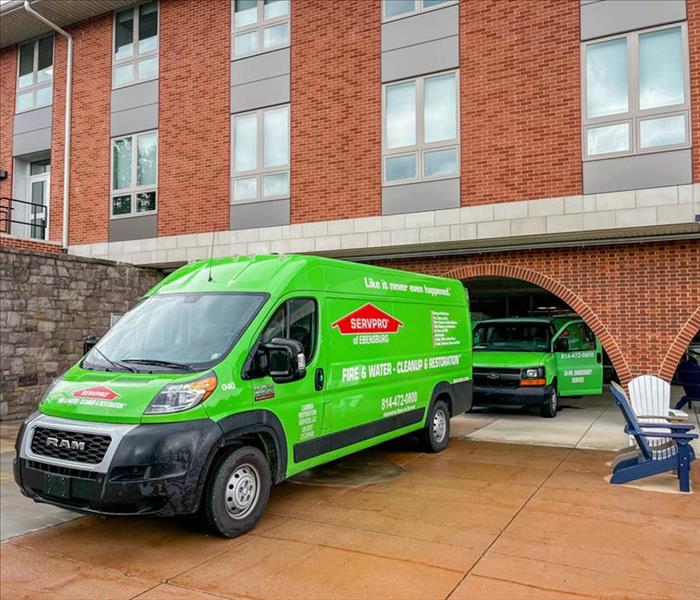 Water damage is a common and often costly issue for homeowners and businesses.
Water damage is a common and often costly issue for homeowners and businesses.
Water damage is a common and often costly issue for homeowners and businesses. Preparing for potential water damage and having a financial plan in place can make a significant difference in how well you recover from unexpected events. In this blog, we'll explore the importance of financial planning for water damage preparedness in Pennsylvania, providing insights and tips to help you safeguard your financial future.
1. Understand Your Insurance Coverage
One of the first steps in financial planning for water damage preparedness is to review your insurance policies. Most standard homeowner's insurance policies cover certain types of water damage, such as burst pipes or accidental leaks. However, they may not cover flooding from natural disasters. Consider adding flood insurance if you live in a flood-prone area, as this can be a financial lifesaver.
2. Build an Emergency Fund
Having an emergency fund can help you cover immediate expenses in the event of water damage. Aim to save at least three to six months' worth of living expenses in a readily accessible account. This fund can cover deductibles, temporary accommodation costs, and emergency repairs.
3. Regular Maintenance
Investing in regular home maintenance can prevent water damage and save you money in the long run. Inspect and maintain your roof, plumbing systems, gutters, and foundation to catch potential issues before they become costly emergencies.
4. Create a Water Damage Budget
Consider creating a separate budget or sinking fund specifically for potential water damage. Set aside a portion of your monthly income to cover maintenance, repairs, and unexpected incidents. Having a designated fund can prevent financial stress when water damage occurs.
5. Document Your Belongings
Maintain an inventory of your belongings, including photographs and receipts. This documentation can be invaluable when filing insurance claims after water damage. Store this information in a secure, easily accessible location.
6. Consult with Restoration Experts
Establish a relationship with a reputable restoration company like SERVPRO® of Southern Blair and Bedford County. They can provide you with estimates for potential restoration costs and help you plan for unexpected emergencies. Having a professional on your side can streamline the recovery process.
Financial planning for water damage preparedness in Pennsylvania is a prudent step toward safeguarding your financial future. By understanding your insurance coverage, building an emergency fund, and investing in preventative maintenance, you can mitigate the financial impact of water damage incidents. Remember that SERVPRO® of Southern Blair and Bedford County is here to assist Pennsylvania residents with professional cleanup and restoration services, should the need arise. We are committed to helping you recover from water damage and protect your financial well-being.
Accidental Activation: What to Do If Fire Sprinklers Go Off Unexpectedly
7/27/2023 (Permalink)
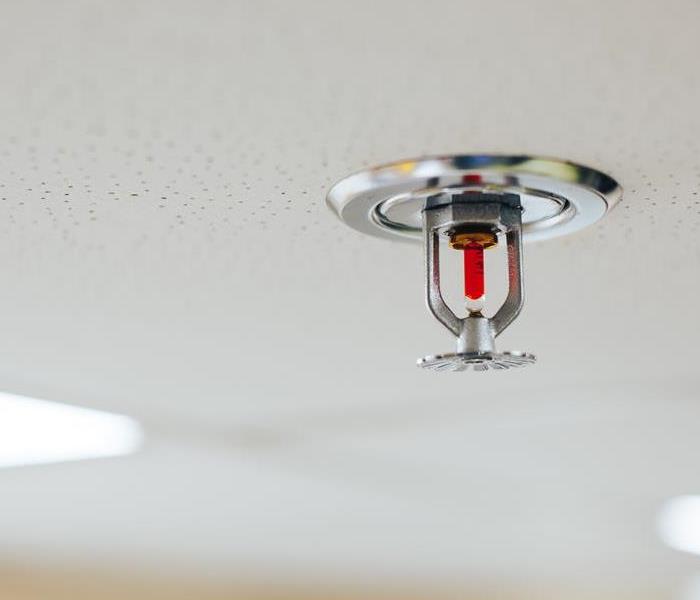 Accidental activation of a fire sprinkler can leave your building with significant water damage.
Accidental activation of a fire sprinkler can leave your building with significant water damage.
Fire sprinkler systems are designed to protect lives and property by quickly responding to fire emergencies. However, there are instances when fire sprinklers may be triggered accidentally, causing water damage and potential disruption. Understanding how to respond calmly and effectively in such situations can help minimize damage and ensure a swift resolution. In this blog post, we'll discuss the necessary steps to take if fire sprinklers go off accidentally.
Stay Calm and Assess the Situation
The first and most crucial step is to remain calm. Panicking can hinder your ability to make rational decisions. Take a moment to assess the situation and determine the cause of the accidental activation. Look for any signs of fire or smoke, as well as potential triggers such as physical impact, temperature fluctuations, or a malfunctioning sprinkler head.
Locating the main water shut-off valve is essential to stop the flow of water and minimize further damage. Familiarize yourself with the building's fire protection system and identify the valve's location beforehand, if possible. Typically, the valve is found near the sprinkler riser or in a utility room. Shutting off the water supply should halt the flow of water from the sprinklers.
Call Emergency Services
If there is any indication of a fire, immediately call the emergency services (fire department) and inform them about the situation. Even if there is no fire, it's essential to report the accidental activation to ensure proper documentation and assistance, if needed. The fire department can provide guidance and assess the situation upon their arrival.
Inform the property manager or building owner about the accidental activation of the fire sprinklers. They should be notified promptly to initiate necessary actions, such as coordinating repairs, assessing water damage, and communicating with relevant parties, such as insurance companies.
Document the Incident
Take photos and videos of the affected areas, documenting the extent of water damage caused by the accidental sprinkler activation. This documentation will be valuable for insurance claims and any subsequent investigations. Make notes regarding the time and date of the incident, the circumstances surrounding the activation, and any visible damages.
Once the water flow has been stopped, focus on mitigating water damage as much as possible. Use mops, towels, or a wet-dry vacuum to remove standing water. Place buckets or containers under any active leaks to collect water and prevent further damage to furniture or electronics. Open windows and doors to facilitate air circulation and aid in the drying process.
Seek Professional Restoration Services
Depending on the severity of the water damage, it may be necessary to engage professional restoration services. Water damage restoration experts have the knowledge, equipment, and experience to properly assess and address the situation. They can help with water extraction, drying, dehumidification, and restoring affected areas to their pre-incident condition.
Contact your insurance provider to report the incident and initiate the claims process. Provide them with the necessary documentation, including photos, videos, and any other relevant information. Follow their instructions and keep track of all communication for reference.
Schedule Sprinkler System Inspection and Repair
Arrange for a professional inspection of the fire sprinkler system to determine the cause of the accidental activation and ensure its proper functioning. Engage a licensed fire protection company to assess and repair any damaged sprinkler heads or components. Regular maintenance and inspections are crucial for the continued reliability and effectiveness of the fire sprinkler system.
Accidental activation of fire sprinklers can serve as a learning experience. Evaluate the incident and consider implementing preventive measures to minimize the chances of future accidents. This may involve reviewing protocols for activities that could potentially trigger the sprinklers, such as renovations or high-temperature processes.
Dealing with accidental activation of fire sprinklers requires prompt action, clear-headedness, and effective communication. By following the steps outlined above, you can mitigate water damage, ensure proper documentation, and initiate the necessary repairs. Remember, it's crucial to stay calm, contact emergency services, shut off the water supply, and communicate with the relevant parties. With the right approach, you can efficiently handle the situation and restore normalcy while maintaining the integrity of your fire sprinkler system.
How to properly snake a clogged pipe.
3/12/2023 (Permalink)
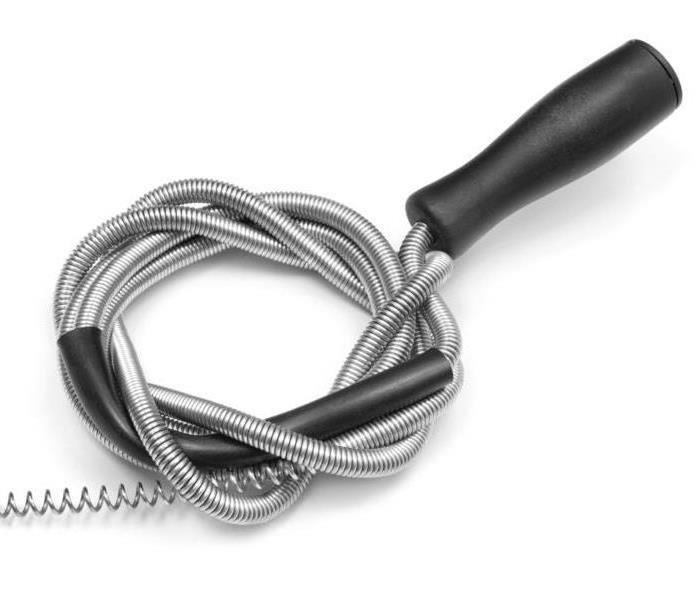 Need assistance with a clogged toilet, give SERVPRO a call today.
Need assistance with a clogged toilet, give SERVPRO a call today.
Don't let fear of failure keep you from trying out this DIY method for unclogging your pipes at home. If anything goes wrong, call in a professional plumber who knows how to use their own snake instead! Before you call a plumber and spend hundreds of dollars on repairs, try clearing the clog yourself. This guide will show you how to snake a drain using only common household tools.
Locate the clog.
Locate the clog. You'll want to check all of your drains, starting with the kitchen sink. If you have a garbage disposal, be sure to remove it and run water through it to see if anything's stuck in there. Then move on down through your plumbing system, if there's any type of bathtub drain or shower drain (including a tub/shower combo), make sure that it isn't blocked by hair or soap scum buildup.
If you're still having trouble finding where things are getting backed up, try inspecting all of your drains outside as well. Sometimes leaves can get stuck in an exterior drainpipe that leads away from the house, or even small animals like mice could make their way inside if there are openings around pipes leading outside.
Remove debris.
Once you have removed the clogged drain, it is important to clean out any hair or other debris that may have been trapped in there. If left behind, this material will just clog up again, requiring another snake job and possibly leading to a bigger problem down the road if not addressed properly. Water damage could potentially occur if the debris is not cleaned out of the drain.
Snake the drain.
You can use a snake to push the clog further down the line. A snake is a flexible wire with an attached hook at one end and a handle on the other end. The hook is used to grab onto pieces of debris that may be caught in your pipe, then you pull them through until they reach where you want them to go.
If you're using this method, make sure that your drainpipe isn't plugged up all too tightly, you don't want it breaking under pressure! You might need someone else's help if it does break or get stuck inside your drainpipe (which could cause even more mess).
Snaking a clogged pipe is not hard or scary, it just takes some patience and know-how (and maybe a little bit of elbow grease. If your still in need of plumbing assistance, SERVPRO is here to help! Give us a call at the sign of a clogged drain.
What is the Water Damage Restoration process?
2/10/2023 (Permalink)
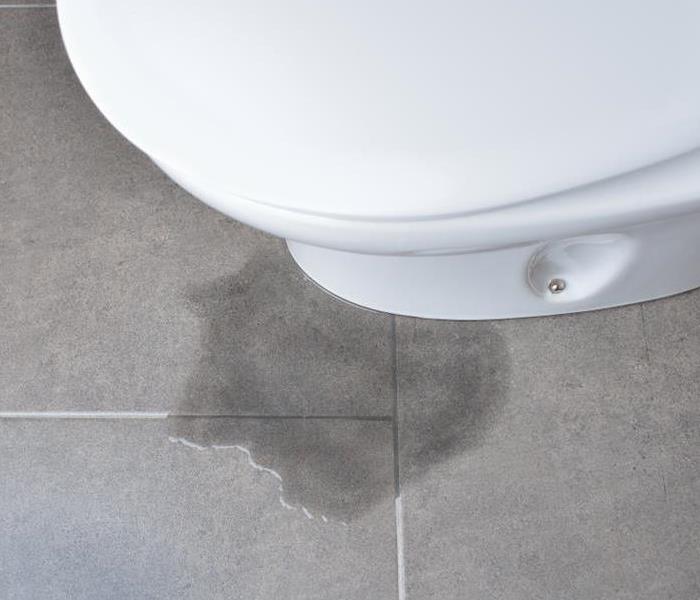 When disaster strikes, give SERVPRO a call at the first sign of water damage.
When disaster strikes, give SERVPRO a call at the first sign of water damage.
Water damage is a serious problem for homeowners and business owners alike. If you have water damage in your home or business, SERVPRO has the experience and expertise to help. Water damage restoration is a process that takes many steps. After you've experienced water damage, it's important to take immediate action. Your technician will assess the damage and determine its source before creating a plan of action based on your unique situation.
After water damage occurs.
If you've experienced water damage, it's important to take immediate action. Water damage can cause mold and other problems if not addressed quickly. In addition to causing structural damage and secondary damages. Mold can also be very expensive to remove once it has begun growing in your home or business.
Assess the damage.
Upon arrival, your technician will assess the damage. First, they'll look for structural damage to your home and determine if there is any risk of secondary damages. The technician will also take note of how long the water has been standing in your home, as well as what caused it (i.e., broken pipe). They will inspect all items that have been damaged by this incident in order to determine whether they can be salvaged or if they need to be discarded entirely.
Source of the water
The source of the water will be determined, as well as its cause. If you have a broken pipe, your technician will identify where it's located and how much damage has been done by determining where there is standing water or puddles on your property. After this initial assessment, he or she will go about removing any debris and drying out areas that have been affected by moisture, for example, carpets, walls and ceilings.
A plan of action
The technician will assess the damage and create a plan of action. The source of the water, if it can be determined, should be addressed first. If there is standing water in your home or office, this needs to be removed before any cleaning can begin. Removing the wet materials as soon as possible, will cut down on secondary damages. Once this has been done, they will determine what needs to be removed and what needs cleaned up. The use of dehumidifiers and air movers are also put in place to remove moisture and dry surfaces quickly.
Restoration begins.
Once everything is dry, it's time to start the restoration process. Restoration is the final step in water damage restoration and can be best done by a professional. SERVPRO has the experience and equipment to restore your property quickly and efficiency. The goal of this step is to clean, repair and replace damaged items as needed.
SERVPRO of Southern Blair and Bedford County has technicians that are available 24/7 for your water damage needs, and they can get you back to normal as quickly as possible. SERVPRO is the most trusted name in the water damage restoration industry. We're ready to respond immediately when you need us most: day or night, weekends and holidays included.
What to Do If a Pipe Bursts
11/8/2022 (Permalink)
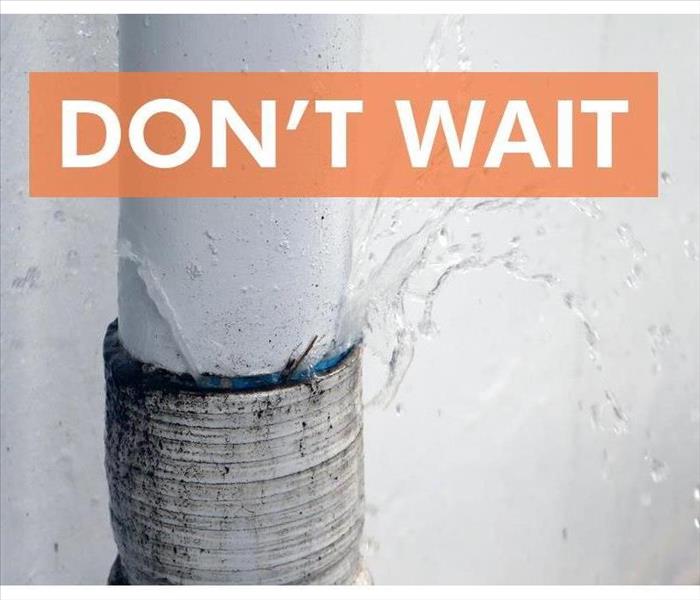 A leaking pipe will become a burst pipe causing flooding.
A leaking pipe will become a burst pipe causing flooding.
How to Handle a Burst Pipe
It's unfortunate, but every home has the potential to suffer from a burst pipe or line. Knowing what to do in this situation can help you minimize water damage and get your home back up and running again. It also helps to know what not to do: don't try fixing it yourself! If you're faced with this problem at home, follow these steps:
Shut Off the Main Water Valve
Once you've ensured that no one is injured and everyone has evacuated the premises, shut off the main water valve. If you're unsure how to turn it off, there should be instructions nearby; if not, simply call a plumber who can help you find where it is and what to do with it.
Shutting off your home's main water valve will stop all water flow into or out of your property. This action is critical because if left unchecked, leaking pipes can cause damage to floors and walls as well as cause flooding in surrounding areas. Once this step has been taken and any necessary repairs made to prevent further damage (see below), turn on your home's faucets again using only cold tap water for flushing purposes until everything is back up-and-running smoothly.
Open a Faucet to Relieve Pressure In the Line and Stop the Flow of Water
If a pipe bursts, you should open a faucet to relieve pressure in the line and stop the flow of water. This will reduce stress on the pipe and prevent further damage. You may also use a wet/dry vacuum to remove water from your flooring.
If you have any questions about whether you have a burst pipe, contact one of our trained technicians today!
Call an Emergency Plumber
If the pipe has burst, it’s important to call an emergency plumber right away. Here's why:
The plumbing system is often your home's most vulnerable part of your infrastructure. It contains water and gas, which can be deadly if not handled properly. Leaky pipes can cause severe damage to your property, so you need a professional who knows what they're doing come in as soon as possible.
If a pipe bursts within the walls of your home, it could cause serious damage to everything around it—from drywall and floorboards to electrical wiring and insulation. This can lead to further leaks or costly repairs down the road.
Use a Bucket To Remove Excess Standing Water, if Possible
If you can, remove any excess water from the area. This can help prevent a small leak from becoming a big problem. Use a bucket to collect water and remove it from the area or use a wet/dry vacuum if you have one on hand. If your house has hardwood floors, put down large pieces of cardboard to prevent damage while you work.
Another way to try and catch the leak is by using a shop towel or something similar as an absorbent pad underneath your leaking pipe.
Call SERVPRO for Cleanup and Restoration Services
Call SERVPRO of Southern Blair and Bedford County at (814) 624-9083 to receive help with your cleanup and restoration needs. We are a 24/7 emergency service, so there's no need to wait until regular business hours to call us. We'll be there right away!
Our fast response time, guarantee for all work performed, and certified technicians mean that you can rest assured knowing we'll take care of everything needed for restoring your home or business back to its pre-burst condition. If you're looking for an expert in basement water damage or any other type of pipe burst cleanup or repair work, look no further than SERVPRO of Southern Blair and Bedford County!
If you find yourself with a burst pipe, don’t wait to call for help. The longer you wait, the more damage your home could suffer from secondary water damage like mold growth. Contact SERVPRO today if you need immediate cleanup services after a burst pipe incident!
Water Damage - 5 Steps for Prevention
8/11/2022 (Permalink)
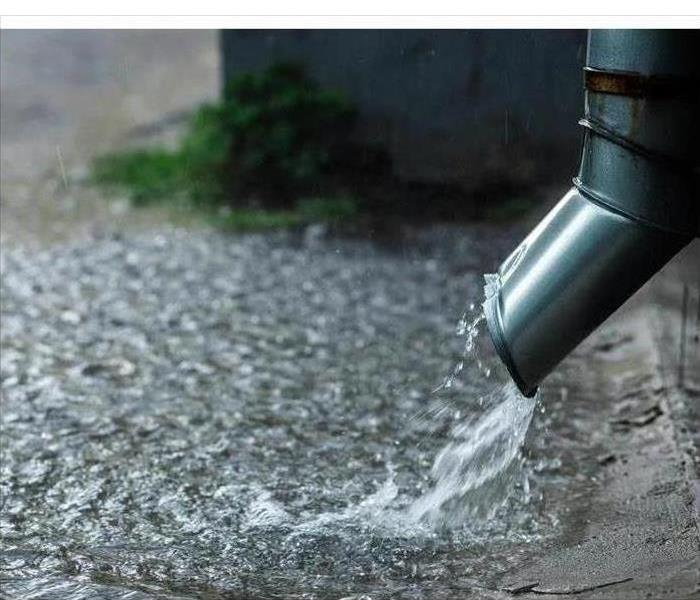 Prevent downspouts from creating basement flooding
Prevent downspouts from creating basement flooding
Steps To Prevent Water Damage In Your Home
For a new homeowner in Mount Union, PA, especially one who has only ever lived in apartments, the maintenance list for your new purchase can seem daunting! As you plan how to manage lawn care, home upgrades, and regular maintenance, make sure that your checklist includes steps for preventing water in your home. Water intrusion can be costly in a number of ways. Here are five things you can do to prevent water damage.
1. Check Seals
Especially in the basement and near windows and doors, check to make sure that all edges are sealed. Even a slight crack in the caulking can allow water to seep, causing mold damage or structural problems.
2. Inspect the Roof
A leaky roof is a common way that you can end up with water in your home. Look for wet or discolored spots in the attic that indicate the presence of water. If you're unsure as to whether water damage has occurred or is occurring, call a local water damage specialist to complete an assessment.
3. Extend Downspouts
Water that pools around the foundation of your house will compromise the structural integrity of your home. Ensure that the downspouts are not cracked and that they extend at least two feet away from your home to prevent water pooling.
4. Maintain Drains
If a sink is slow to drain, don't ignore it. A clogged pipe can lead to a broken pipe if the clog isn't cleared. The pressure of water building up can compromise your plumbing and lead to big problems.
5. Upgrade Pipes
In an older home, check the status of the pipes. Pipes that are corroded or old can easily crack under pressure or from extreme temperatures. If a pipe does crack, a leak might occur, causing extensive damage in a short amount of time. Pipe cleanup and repair can protect your home.
Preventing water in your home is a simple matter of following a regular home maintenance schedule. Always contact a professional if you're concerned about potential damage to your home.
How To Handle Broken or Frozen Pipes
6/30/2022 (Permalink)
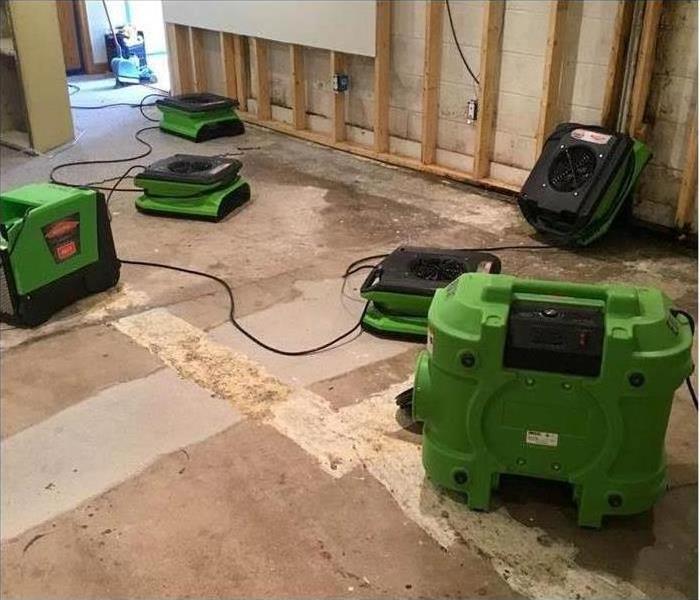 Water damage specialists in Morrisons Cove, PA.
Water damage specialists in Morrisons Cove, PA.
How to Deal with Frozen or Broken Pipes
Your commercial building in Morrisons Cove, PA, depends on reliable plumbing to function properly. Water damage from a frozen pipe, however, can lead to serious secondary issues if not dealt with quickly. Here are the steps you need to take as soon as you know you have a problem.
Stop the Damage
Broken pipes continue to release all the water that flows to them into your walls or cabinets. To stop damage in its tracks, take the appropriate measures to resolve the issue that's causing it:
- Shut off the building's water main.
- Call the plumber to repair the pipes.
- Remove vulnerable items or documents out of the path of the water.
- Get rid of standing water.
Call for Water Cleanup
Even after the pipe is fixed, there is still work to be done. Any drywall, insulation, flooring or ceiling tiles that were drenched will need to be repaired or replaced. Water damage restoration specialists can arrive at your building within hours of the event to assess the problem. Then they formulate a game plan for mitigating whatever water issues you have.
Prevent Future Damage
Once you have put your business on hold for mitigation, you probably never want to go through that again. You can increase your chances of preventing future damage by keeping pipes warm so that they don't freeze. Add insulation tape to them, especially if they are located along an external wall. Keep the temperature in your building no lower than 55 degrees, even at night when it's empty. Open cabinets that contain the pipes when the building shuts down for the evening so that warm air can reach them more easily.
Not all water damage is preventable, but fast attention and quick cleanup can get your building back to normal in a timely manner. As soon as you know you have damage, call for the help you need.
5 Ways To Prevent Water Damage in Your Home
5/21/2022 (Permalink)
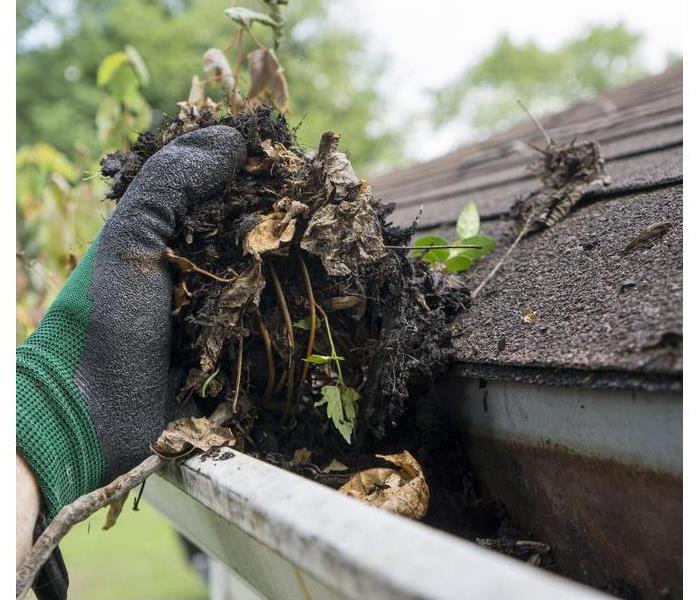 Keep your gutters clean.
Keep your gutters clean.
Water Damage Prevention in Your Home
No matter what caused water in the home, whether a burst pipe or heavy rains, water will quickly begin causing damage. Although nothing is 100% certain, taking some simple actions can further prevent water damage.
1. Inspect Your Roof, Gutters and Downspouts for Damage or Blockages
You should check your roof, gutters and downspouts at least twice a year and after significant storms. Look for roof damage like missing or loose shingles. Also, look at the caulking and flashing around roof penetrations (e.g., vents, drains, chimneys). Inspect your gutters and downspouts for damage or blockages, and clean the gutters regularly.
2. Improve Your Yard's Drainage
If you're experiencing water seeping into your Breezewood, PA, home after heavy rains, you may need to improve your landscaping. Your yard may have improper drainage or be graded toward your home.
3. Examine Your Plumbing for a Broken Pipe
Clogs or cracks in water lines and hoses can eventually develop into a deluge of water in the home. Check under bathroom and kitchen sinks and around toilets to ensure there's no moisture in these areas. If you find a leak, call for pipe cleanup and repair immediately. If you have standing water, you may need water damage restoration professionals to mitigate loss and mold growth.
4. Check Your Water Pressure
Regularly review the water pressure in your home to ensure it isn't putting a strain on your plumbing. You can buy a low-cost gauge at a home improvement store to inspect it yourself.
5. Maintain Your Appliances
Any appliance that uses water can spring a leak, including dishwashers, clothes washing machines, refrigerators and air conditioners. Regularly check the water supply lines for each appliance. If you see rust, cracking or bulging, or moisture along the lines, you should replace them as soon as possible.
Discovering standing water in the home can be anxiety-provoking, to say the least. Much of the risk can be prevented by doing simple inspections and maintenance a few times a year.
These 5 Signs Mean You Should Change the Supply Lines in Your Bathroom
5/16/2022 (Permalink)
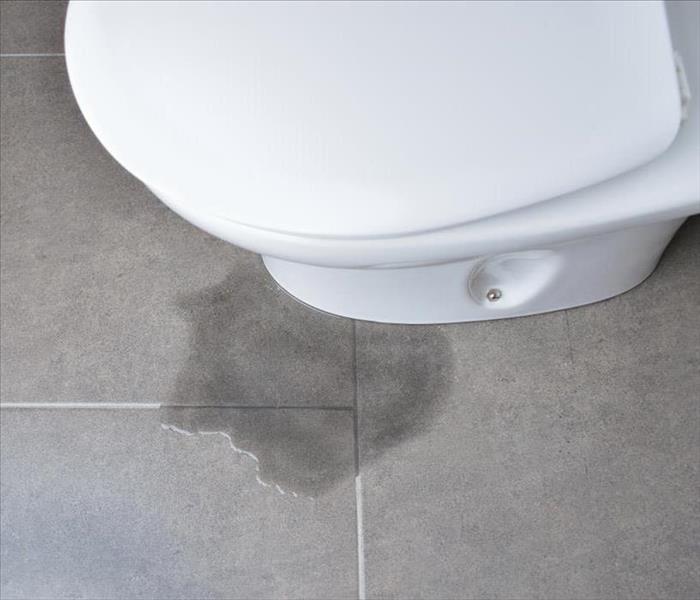 A leaking toilet might be a sign of supply line damage
A leaking toilet might be a sign of supply line damage
These 5 Signs Indicate That Your Bathroom Supply Lines Should Be Replaced
Supply line damage from old or corroded water pipes not only costs you money but can also incur costly repair bills. If you see any of the following signs, change the supply lines in your bathroom right away.
1. A High Water Bill
When you have a supply line leak, that water is running whether you're using it or not. It's going into the soil around your home, causing damage to the street and sidewalks near your property. Contact restoration specialists to repair the damage and return your Martinsburg, PA, residence to normal.
2. The Type of Pipe
Water pipes have different warranties depending on their materials. Steel braided pipes have a lifetime guarantee. Plastic pipes, on the other hand, only have a lifetime of between five to eight years, depending on the material from which they're made. They're more prone to supply line damage than other types of pipe.
3. Low Water Pressure
If your toilet is taking longer to fill than it used to or there isn't as much water coming out of your sink's faucet, that too could be a sign that your supply lines need to be replaced.
4. A Toilet or Bathroom Leak
If you keep finding a puddle of water on the floor near your toilet, that could also be a sign of supply line damage. Replace those lines to avoid further waste and deterioration.
5. Noisy Pipes
If you hear the sound of running water, even when your faucets are shut off, your lines are likely impaired. Damaged lines will also make other noises like bangs or whistling sounds.
Damaged water pipes can cost you money in wasted water and repairs, but with the help of professionals, your lines can be replaced and your home will not only be good as new, but even better.
Residual Troubles of a Burst Pipe: Understanding Secondary Damage Hazards
4/5/2022 (Permalink)
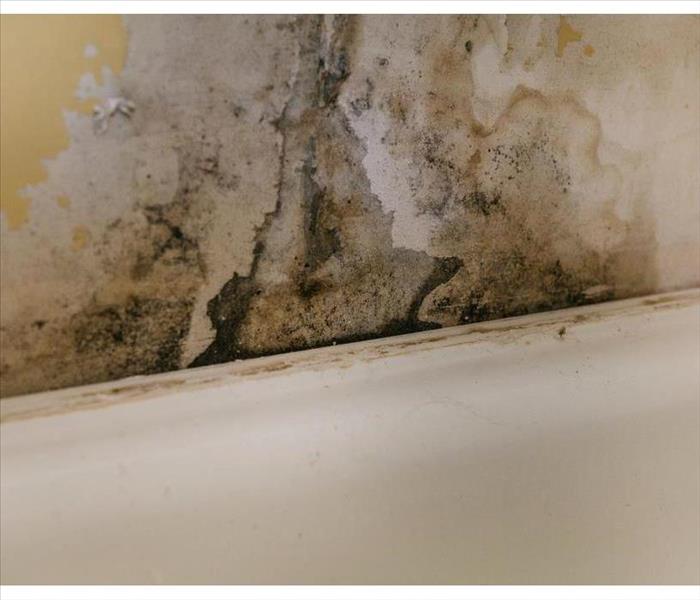 Water can lead to mold growth.
Water can lead to mold growth.
Understanding Secondary Damage Hazards
When a pipe breaks, homeowners in Roaring Spring, PA, experience a primary issue. Water sprays out of the pipe, drenching the space. When fluid infiltrates an area, it triggers secondary concerns, some of which are quite hazardous. Black mold can grow, and structures can begin to deteriorate. To avoid these significant headaches, owners should understand how water impacts a location. The following are three possible significant problems.
1. Structural Integrity
Builders designed the house with numerous porous materials. These substances--drywall, wooden beams and carpeting--easily and quickly absorb moisture. Like a sponge, they pick up the high humidity levels, filling their crevices with fluid. Over time, this leads to rot and decay. The following may become noticeable:
- Warped floorboards
- Water stains
- Crumbling paint
- Corroded metal
- Foundational cracks
Breaches to the structure mean owners must face extensive repairs to restore safety. A water restoration company should evaluate the premises. Using moisture readers, the experts can determine the extent of saturation and recommend appropriate remediation services.
2. Fungus Contamination
Dampness, especially in dark locations, activates fungal spores which begin to spread at rapid rates. Within 24 to 48 hours, the microbes have made themselves at home, settling inside objects. Black mold moves throughout the space, eating away at organic material. Left to linger, it can even enter the air system, migrating to other rooms. Decontamination procedures should occur immediately, requiring drywall and carpeting tear-outs. Bleach isn't going to reach inside. Content cleaning experts may use sophisticated technology to salvage belongings. Ultimately, though, most of the soaked items need to go.
3. Electrical Haywires
Part of the secondary damage is a concern for the home's wiring. Water and electricity do not mix. As the wetness moves into the walls and crawl spaces, the fluid could interfere with the outlets and overall electrical system. Be cautious about using even the fan. Be plugging or using any source, and have the wiring evaluated for damage.
The busted pipe can create a domino effect, permitting multiple calamities to begin. Black mold and structural harm are both possible. Be aware of the dangers, and be proactive in the cleanup. Efficient and methodical care could avoid these hazards.
Cleaning Sewage in a Home
1/29/2022 (Permalink)
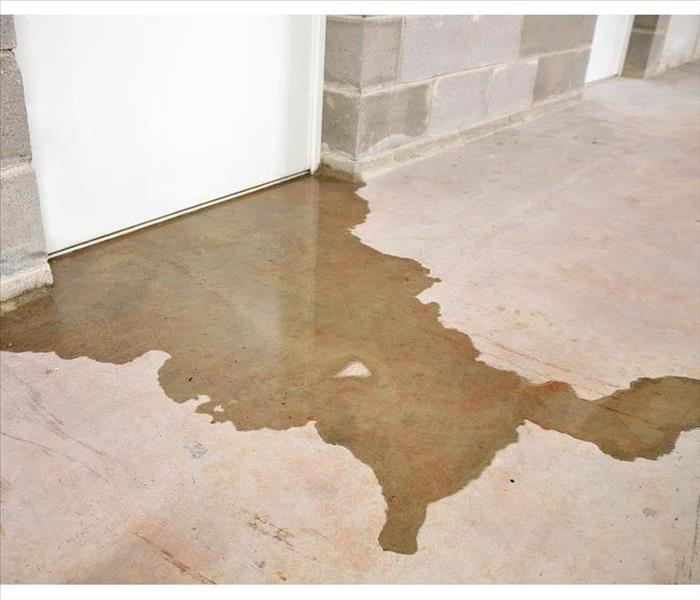 Sewer backup in a home in Duncansville, PA.
Sewer backup in a home in Duncansville, PA.
Sewer Cleanup Process
Sewer cleanup in Duncansville, PA, is certainly not a pleasant experience, but when a sewer backup happens, be sure to take care of it right away. Whether it occurs as the result of a flooded toilet or another issue, leaving the sewage in place can result in significant damage to the home.
Taking Steps To Clean and Disinfect
The first step in the process is ensuring safety, so you should wear the right protective gear and ensure that the gas and electricity to the area you have to clean are shut off. Next, use the following steps to make sure that the area is sufficiently cleaned and sanitized:
- Drain all flood waters from the area.
- Remove all items that can be picked up and carried out of the space.
- Mix a low-suds detergent with warm water and completely scrub all surfaces.
- Use plain warm water to rinse thoroughly every area that you just cleaned.
- Sanitize the surfaces using bleach or a similar product.
- Use fans and open windows to air out the space and alleviate the humidity.
Preventing Future Sewage Backup
After you go through the sewer cleanup process, you probably understand this is surely something that you never want to have to tackle again. To help avoid it in the future, you should take the right preventative measures. The first step to this process is knowing what the possible causes are, which include tree roots causing blockages to the sewer lines, water in your basement deteriorating the elements that protect your home’s lines, and the sanitary main becoming blocked.
With this information about sewer cleanup and the prevention of future problems, you can better get the task completed and start working on the steps for restoring your home. Keep in mind that the faster you tackle the problem, the less damage that may occur.



 24/7 Emergency Service
24/7 Emergency Service










